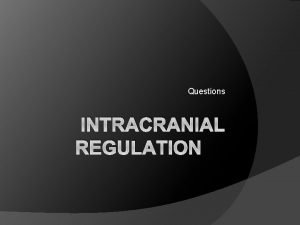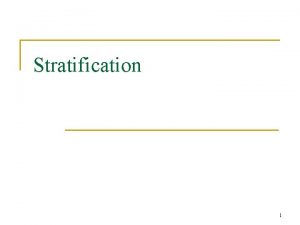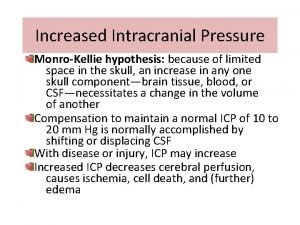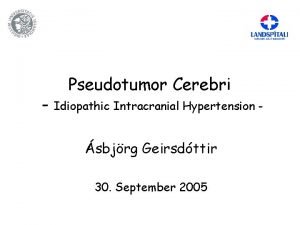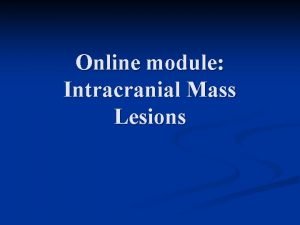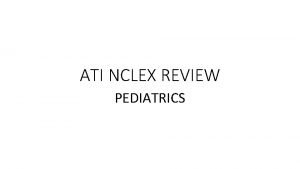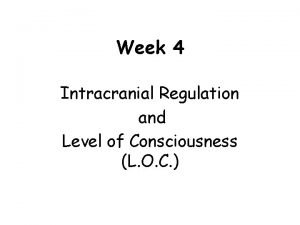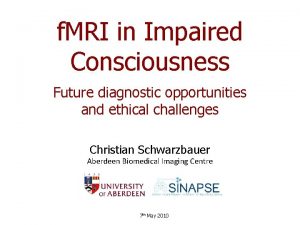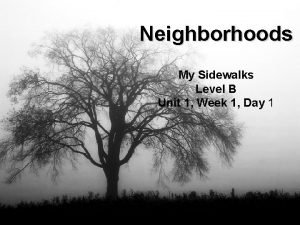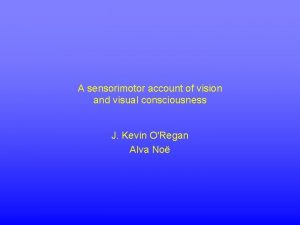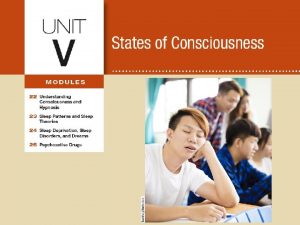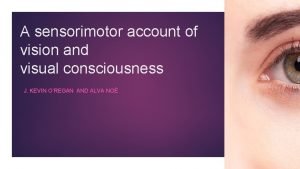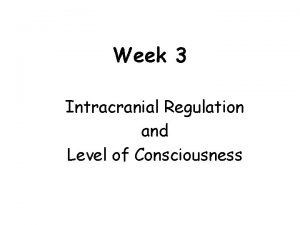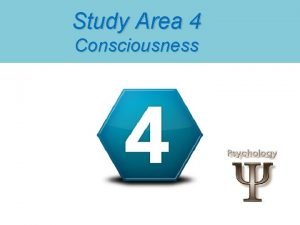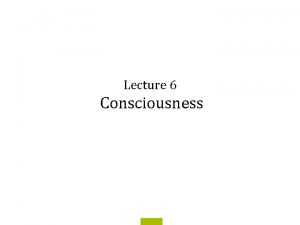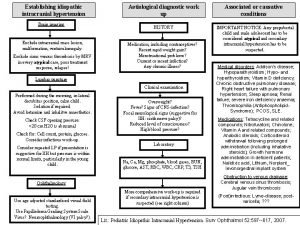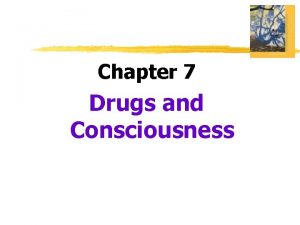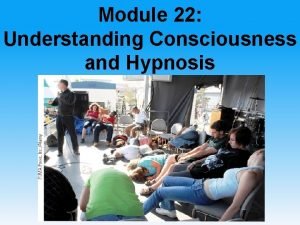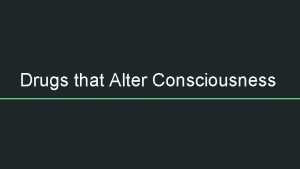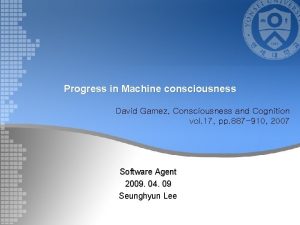Week 4 Intracranial Regulation and Level of Consciousness

































- Slides: 33

Week 4 Intracranial Regulation and Level of Consciousness (L. O. C. )

Learning Objectives 1. Identify awake/asleep, alert, orientation to person, place and time as norms, vs. abnormal findings. 2. Explain how intracranial regulation controls level of consciousness and vital signs. 3. Identify key normal neurologic assessment techniques and findings with consideration for variations across the lifespan.

What is consciousness?

Consciousness is a condition in which the person is aware of self and environment and is able to respond appropriately to stimuli.


Constricted Pupil

Constricted pupil occurs when bright light enters the eye, and when it is used for near vision.

In response to intense light, the pupil constricts rapidly in the pupillary light reflex.

We use a penlight or flashlight to assess the reactions of the pupil of the eye during an assessment.

PERRLA: Acronym/abbreviation for: Pupils Equal, Round, Reactive to Light Accommodation

Dilated Pupil

The pupil dilates when light conditions are dim, and is used for far vision.

Unequal Pupils

What should pupils look like?

Equal and reactive to light…

We are also looking for symmetry, which is lacking in the presence of facial drooping.

This deviated tongue lacks symmetry.

Weakness in an extremity, as in arm drift, lacks symmetry.

A hand grasp can determine equal strength in the upper extremities.

Q. What if the pupils are unequal, but reactive to light? A. This is an abnormal sign, especially with a head injury.

(An assessment tool to be aware of. )

Observe for clear and appropriate patient verbal response

Subjective Assessment Findings: What might you observe or hear? A specific complaint, history of precipitating event from patient or family…

Objective Assessment Findings: What might you observe that is measureable? Vital Signs, slurred speech, unable to speak, bruising, wounds, blood in ears or nose, poor balance, weakness in an extremity, facial asymmetry, pupillary response, pupillary size…

A few words about perfusion…

What is perfusion? The continuous supply of oxygenated blood to every cell in the body. (Changes in perfusion affect all human functions!)

Remembering soft brain, hard skull…

Q. As a nurse, what are you observing for when…

…a bleeding brain creates pressure on the brain tissues and prevents adequate tissue perfusion?

A. Decreased tissue perfusion

Observe if the patient is the responsive or unresponsive… Are there any changes in L. O. C? (Level of consciousness)

If your once responsive patient is suddenly unresponsive, what part of the assessment becomes your first priority? We want to be sure the patient has a patent airway!

End of Week 4
 Intracranial regulation nursing
Intracranial regulation nursing Cushing triad
Cushing triad Types of social mobility
Types of social mobility What is nacocow
What is nacocow How does meningitis cause increased intracranial pressure
How does meningitis cause increased intracranial pressure Decorticate posturing
Decorticate posturing Intracranial hypertension
Intracranial hypertension Mui.ac.ir
Mui.ac.ir Decreased intracranial adaptive capacity
Decreased intracranial adaptive capacity Intracranial teratoma
Intracranial teratoma Adhesive arachnoiditis
Adhesive arachnoiditis Intracranial mass
Intracranial mass Nurses responsibility of mannitol
Nurses responsibility of mannitol Mosby
Mosby Intracranial hypotension radiopedia
Intracranial hypotension radiopedia Increased intracranial pressure ati
Increased intracranial pressure ati Rorschach projective test
Rorschach projective test Abnormal flexion vs extension
Abnormal flexion vs extension Level of consciousness assessment
Level of consciousness assessment Self carl jung
Self carl jung Level of consciousness
Level of consciousness Level of consciousness
Level of consciousness Nde
Nde Week by week plans for documenting children's development
Week by week plans for documenting children's development Blood glucose level regulation
Blood glucose level regulation Blood calcium level regulation
Blood calcium level regulation My sidewalks level b unit 2 week 3 comprehension test
My sidewalks level b unit 2 week 3 comprehension test Consciousness and the two-track mind
Consciousness and the two-track mind A sensorimotor account of vision and visual consciousness
A sensorimotor account of vision and visual consciousness Social influence theory of hypnosis
Social influence theory of hypnosis A sensorimotor account of vision and visual consciousness
A sensorimotor account of vision and visual consciousness Consciouness
Consciouness Significance and confidence level
Significance and confidence level Significance level and confidence level
Significance level and confidence level
